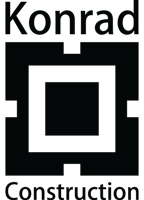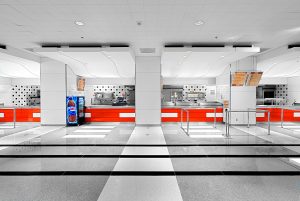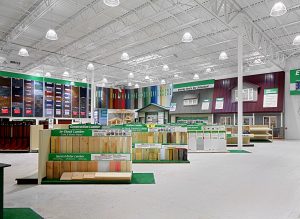Like many other industries, the construction industry is significantly impacted by trends, with every new year being affected by the years before it. It’s crucial to know what these trends are, not only to spot opportunities, but also to plan for the year ahead.
With this in mind, let’s look at some of the rising and prevailing trends in the commercial construction industry.
Increase in Industry Growth
It’s no secret that the construction industry slowed down significantly during the COVID-19 pandemic. However, it’s now showing signs of a complete recovery. It’s expected that the total value of all construction work done in the United States, or put-in-place during 2021 will amount to about $1.57 trillion which would be an increase of 6.8% compared to 2020.
Likewise, it’s expected that the put-in-place for 2021 will amount to $1.67 trillion, which is a 6.6% increase. In terms of different sectors, commercial construction is expected to recover after two consecutive years of slower recovery.
In turn, residential construction is expected to increase by about 7.7%, which while not as large of an increase in 2021, is still significant and will result in residential construction matching commercial construction spending.
New Construction Materials
It’s expected that the trend of using new construction materials will become increasingly popular throughout 2022 and beyond. There are two reasons for this. Firstly, many construction contractors had to, out of necessity, find and use alternative materials due to availability issues during the pandemic.
In addition to this, many construction contractors are looking for sustainable building materials that can minimize costs and, as a result, maximize profits. Some of these materials include engineered timber, Engineered Cementitious Composite, recycled materials, and more.
Material Prices and Supply Chain Challenges
The big news for 2021 was the substantial increases in construction material costs. In fact, during the year, the cost of certain construction materials and consumables like lumber, particleboard, gasoline, and diesel more than doubled compared to their costs at the beginning of 2021. Likewise, other materials like plywood and asphalt also became significantly more expensive.
For this reason, new construction inputs were up by 20.54% by November 2021. Fortunately, some of these costs have started to decrease, but it’s expected that there will be no price stability for the remainder of 2022.
Higher Construction Technology Adoption
The pandemic increased technology adoption across a range of industries and construction is no exception, despite the fact that the construction industry as a whole, has been quite slow to invest in and adopt technology.
Those construction companies that do implement more technology enjoy significant benefits. For example, by using technology, construction companies can make not only their projects, but also their businesses more efficient.
A significant piece of technology that’s making inroads into the industry is BIM, or Building Information Modelling. It allows construction contracts to identify any issues in advance and find solutions for these issues by using 3D building models. In turn, this increases the success rates of projects.
Some other technologies include, for instance, robots and drones that do work that, previously, only skilled workers could do. In turn, this increases worker safety.
Increased Focus on Safety
Safety has always been a vital consideration in the construction industry. It’s no surprise when you consider that the industry has the highest fatal injury rate of all industries. For example, the fatal injury rate for the construction industry increased in 2020, while it decreased for other industries. Of course, apart from fatalities, less serious injuries also lead to a loss of productivity.
In addition, since the pandemic, many construction companies have focused more on the mental health and wellbeing of their employees than before. Combined, this means that there will be more focus on health and safety for the remainder of 2022 and beyond.
The Bottom Line
In any industry, there will always be trends. Some of them will be short-lived, while others will persist. Either way, it’s important to be aware of these trends in order to learn which ones can be capitalized on. Hopefully, this post helped illustrate some of the prevailing trends in the construction industry in more detail.
To get started with your next commercial construction project, get in touch with Konrad Construction. We’re the go-to choice for commercial construction, from concept to completion. We take a team-based problem-solving approach to every project, powered by a whatever-it-takes, always-finish-the-job, adapt-and-overcome, can-do attitude. So, let’s build a relationship: contact us for your free estimate.




